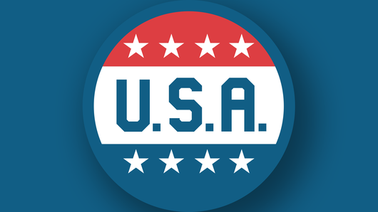- Level Foundation
- Ratings
- Duration 15 hours
- Course by Harvard University
- Total students 7,244 enrolled
-
Offered by

About
Public policy puts laws into action. The executive branch directs the combined activities of the federal government to address a multitude of problems, from the environment to the economy. The policies of the United States affect social issues, economic growth, taxes, regulation, and foreign affairs. This course will take a broad view of public policy in America but will use specific examples, such as the 2008 economic downturn and climate change, to illustrate the wide-ranging effects of those policies.
We'll address the intersection of religion and politics, and how issues such as abortion and same-sex marriage have played out in the political arena. We'll discuss fiscal, monetary, welfare and income policy"what they are, what tools they involve, and what political divisions they create. We'll examine partisan divisions over regulatory policy, and the basis for those divisions. Finally, we'll trace the evolution of America's position as a trading nation by examining trade agreements like the North American Free Trade Agreement (NAFTA) and the Trans-Pacific Partnership (TPP).
This course will also serve as an overview of American government, concentrating on overarching tendencies such as its fragmented power structure. The importance of these tendencies will be explained by showing how thoroughly each of them affects American politics.
What you will learn
- How religion and politics have been a persistent source of conflict
- The nature of U.S. fiscal policy and monetary policy
- How America’s welfare policies are distinct from those of other Western democracies
- The structure and politics of the U.S. tax system
- The partisan divisions over regulatory policy and the basis for those divisions
- The factors that made America an economic powerhouse
Skills you learn
Syllabus
Week 1: Social Policy
This session will concentrate on the intersection of religion and politics, historically and currently. We will explain how issues such as abortion and same-sex marriage have played out in ways that have aligned religious conservatives with the Republican Party and religious liberals and seculars with the Democratic Party.
Week 2: Fiscal & Monetary Policy
This session examines fiscal policy and monetary policy—what they are, what tools they involve, and what political divisions they create. The nature of these policies will be illustrated through several cases, including the policies enacted in response to the economic downturn that began in 2008.
Week 3: Welfare & Income Policy
This session will describe and explain these developments, relating them to both the nature of the U.S. economy and the nature of U.S. policy. The structure and politics of the U.S. welfare system and the U.S. tax system will be points of emphasis.
Week 4: Regulatory Policy
While emphasizing policy, the session will also address partisan divisions over regulatory policy, and the basis for those divisions. Several cases, most notably the politics and policies of climate change, will be used to illustrate key points.
Week 5: Foreign Policy
This session will trace the evolution of America’s position as a trading nation during the post-World War II era, concentrating first on the factors that made America in the immediate post-war period the world’s unquestioned economic power and then on the factors that weakened that position. The session will conclude with an examination of the politics and policies of trade agreements, including adoption in 1993 of the North American Free Trade Agreement (NAFTA) and the rejection in 2017 of the proposed Trans-Pacific Partnership (TPP).
Week 6: Dynamics of American Politics
This session will serve as an overview of the course, concentrating on major tendencies within the American system, such as its fragmented power structure. The importance of these tendencies will be explained by showing how thoroughly each of them affects American politics. The purpose of this session is to reinforce and clarify the “lessons learned” during the course.
Auto Summary
Delve into the intricate world of U.S. public policy with this comprehensive course on Social, Economic, and Foreign Policies. Designed for personal development, this foundational course offers a broad yet detailed exploration of how the executive branch of the federal government addresses various societal challenges, from environmental issues to economic strategies. Guided by experienced instructors from edX, the course spans 15 weeks and uses real-world examples, such as the 2008 economic downturn and climate change, to illustrate the far-reaching impacts of public policies. Learn about the intersection of religion and politics, focusing on contentious issues like abortion and same-sex marriage. Gain insights into fiscal, monetary, welfare, and income policies, and understand the political divisions they create. Students will also explore regulatory policies, partisan divides, and the evolution of America's trade stance through significant agreements like NAFTA and the TPP. Additionally, the course serves as an overview of the American government's structure, emphasizing its fragmented power system and its influence on politics. Ideal for those seeking to understand the complexities of U.S. public policy, this foundational course is available through a professional subscription, making it accessible and beneficial for learners aiming to deepen their knowledge and analytical skills in this domain.

Thomas E. Patterson


